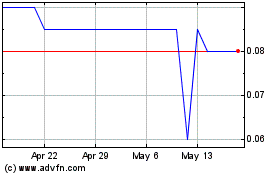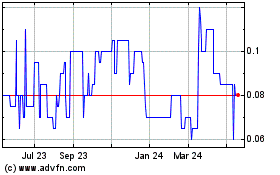Compass Gold: First Results from Metallic Screen Fire Assay Testing Reveals High-Grade Intercepts Along Tarabala Trend
December 21 2022 - 7:15AM

Compass Gold Corp. (TSX-V: CVB) (“
Compass” or the
“
Company”) is pleased to report that the retesting
of drilling intervals from eight drill holes has returned
significantly higher gold grades compared to previous fire assay
testing from the Tarabala and Massala prospects, located on the
Company’s Sikasso Property in southern Mali
(
Figure 1).
Highlights
- Metallic
screen assay testing of historic samples confirmed the presence of
coarse-grained (nuggety) gold mineralization
-
Significantly higher grades were seen in samples from
Tarabala, including:
- 7 m at
14.13 g/t Au (inc. 1 m @ 97.34 g/t Au), compared to an earlier
result of 0.42 g/t Au
- Previous
barren interval returned the presence of gold
- 1 m @
0.92 g/t Au, compared to 0.01 g/t Au
-
Preparing to start new drilling program to confirm grade
and thickness of mineralized zones at Tarabala and Massala using
metallic screen assaying
Compass Gold CEO, Larry
Phillips, said, “These new results show that the metallic
screen assay technique will be an important tool for our team early
next year as they work to better define nuggety gold mineralization
within our permit areas along the major Tarabala trend. The
next round of drilling there will focus on gathering larger samples
from near and below the previously drilled areas where the “nugget
effect” led to the under-reporting of gold mineralization. This
program, which we will launch in January, will be funded through
our current Private Placement offering.”
Technical Director, Dr. Sandy Archibald,
P.Geo., added, “Based on the positive results of the
metallic screen assay study, our next 2,600-metre RC and diamond
drill program at Tarabala will target the continuation of deeper,
down-dip mineralization found during the previous drilling within
the fresh rock. To ensure the most accurate results, we will
combine reverse circulation and diamond drilling followed by
metallic screen fire assaying to fully test these areas. We
anticipate we will identify gold mineralization that could be used
towards a potential maiden resource.”
Background
As previously announced, (see news releases
dated August 29 and September 29, 2022), the Company’s technical
team believes that the variable gold concentrations intercepted on
the Tarabala and Moribala trends may be due to the presence of
coarse-grained gold resulting in a “nugget effect”. In order to
accurately confirm this effect, an analytical assaying method known
as metallic screen was performed by SGS Bamako. This test involves
the crushing and grinding of 1 kg of drill core or RC sample chips,
then passing it through a 106-micron sieve to recover coarse gold,
which is then weighed. The smaller material that passes through the
sieve is then tested using fire assaying (FA), and the total gold
content is then calculated from the recombined sample. The results
of the metallic screening can then be compared with the traditional
fire assay technique that was originally performed shortly after
the holes were drilled.
Five 1-m interval samples and one 5-m interval
sample were selected from Reverse Circulation (RC) drilling
performed at the Tarabala (see news December 30, 2020) and Massala
prospects (September 7, 2021). Additionally, five diamond drill
samples with intervals varying from 3 to 7 m that were drilled in
late October and early November 2021 were tested. The location of
the drill holes is illustrated in Figure 1. The results of the
metallic screen fire assay (SFA) and the regular fire assay (FA)
are presented in Table 1.
Figure 1 is available at
https://www.globenewswire.com/NewsRoom/AttachmentNg/0f645dc5-8a66-4db3-8e10-007a14e18471
Table 1. Comparison of gold grades
between Screen Fire Assay (SFA) and Fire Assays (FA)
|
Hole |
From (m) |
To(m) |
1Interval(m) |
Screen Fire Assay(g/t) |
Fire Assay Au(g/t) |
% change |
|
SARC001 |
54 |
55 |
1 |
1.05 |
1.68 |
-38% |
|
SARC001 |
61 |
62 |
1 |
1.40 |
2.96 |
-53% |
|
SARC001 |
85 |
86 |
1 |
0.92 |
0.01 |
6977% |
|
SARC006 |
79 |
80 |
1 |
0.11 |
0.64 |
-83% |
|
SARC006 |
100 |
101 |
1 |
0.01 |
0.20 |
-95% |
|
SARC010 |
43 |
48 |
5 |
1.26 |
0.94 |
34% |
|
SADD001 |
97 |
102 |
5 |
0.25 |
0.32 |
-23% |
|
SADD001 |
109 |
116 |
7 |
14.13 |
0.42 |
3233% |
|
SADD002 |
72 |
77 |
5 |
0.41 |
0.49 |
-16% |
|
SADD002 |
91 |
96 |
5 |
2.63 |
2.53 |
4% |
|
SADD003 |
64 |
69 |
5 |
0.40 |
0.35 |
14% |
|
SADD003 |
84 |
90 |
6 |
0.77 |
0.67 |
15% |
|
SADD004 |
107 |
112 |
5 |
0.43 |
2.04 |
-79% |
|
SADD004 |
115 |
119 |
4 |
1.22 |
0.92 |
32% |
|
SADD005 |
30 |
33 |
3 |
0.10 |
6.60 |
-98% |
Note. 1True thicknesses are interpreted as 70-90%
of stated intervals. Increase assay grades in
bold.
Table 1 shows the variable nature of gold grades
in the retested intervals. Typically, the reproducibility of gold
reassays is within 20 percent of the original assays. In this
recent program, the reproducibility varies from a 98% decrease to a
6,977% increase, which clearly indicates the nugget effect is
present. Of note are the exceptionally high gold grades recorded in
diamond drill hole SADD001 from 109 to 116 m:
7 m @ 14.13 g/t Au (metallic screen fire
assays) versus 7m @ 0.424 g/t Au (original fire assay),
which is highly influenced by one sample that contained
97.34 g/t Au. Similarly, a 1-m interval from RC hole SARC001
at a depth of 85 m, returned a grade of 0.92 g/t Au (SFA) versus
0.013 g/t Au from the original fire assay. Nuggety gold is usually
more common at shallow depths (less than 30 m), but this study
shows that the largest grade variation is within the fresh rock in
samples collected at depths of greater than 80 m.
The significance of the recent metallic screen
fire assay analyses is that it is likely that coarse (nuggety) gold
has not been satisfactorily analyzed at the prospects along the
Tarabala and Moribala faults. This is independently verified by the
fact that, while artisanal miners have been recovering coarse gold,
Compass’s drilling has detected little or no mineralization (see
Compass press releases from August 29 and September 29, 2022).
Next Steps
As noted, this next drill program at Tarabala
will focus on mineralization at depth within the fresh rock. Ten
reverse circulation holes totaling 2,000 m will help ensure as
large a sample as possible, while four diamond drill holes for 600
m will reveal the characteristics of the mineralized veins. At
least one drill hole will target shallow gold mineralization so
metallic screen assaying can be used to quantify the nugget effect
at shallow, open-pittable depths. Based on financing, this program
is expected to conclude by early February, with results likely
available in March.
About Compass Gold Corp.
Compass, a public company having been
incorporated into Ontario, is a Tier 2 issuer on the TSX- V.
Through the 2017 acquisition of MGE and Malian subsidiaries,
Compass holds gold exploration permits located in Mali that
comprise the Sikasso Property. The exploration permits are located
in four sites in southern Mali with a combined land holding of
1,143 km2. The Sikasso Property is located in the same region as
several multi-million-ounce gold projects, including Morila, Syama,
Kalana and Komana. The Company’s Mali-based technical team, led in
the field by Dr. Madani Diallo and under the supervision of Dr.
Sandy Archibald, P.Geo, is conducting the current exploration
program. They are examining numerous anomalies first noted in Dr.
Archibald’s August 2017 “National Instrument 43-101 Technical
Report on the Sikasso Property, Southern Mali.
Qualified Person
This news release has been reviewed and approved
by EurGeol. Dr. Sandy Archibald, P.Geo, Compass’s Technical
Director, who is the Qualified Person for the technical information
in this news release under National Instrument 43-101
standards.
Forward‐Looking InformationThis
news release contains “forward‐looking information” within the
meaning of applicable securities laws, including statements
regarding the Company’s proposed Offering and the use of proceeds
of the proposed Offering. Readers are cautioned not to place undue
reliance on forward‐looking information. Actual results and
developments may differ materially from those contemplated by such
information. The statements in this news release are made as of the
date hereof. The Company undertakes no obligation to update
forward‐looking information except as required by applicable
law.
For further information please contact:
|
Compass Gold Corporation |
Compass Gold Corporation |
|
Larry Phillips – Pres. & CEO |
Greg Taylor – Dir. Investor Relations & Corporate
Communications |
|
lphillips@compassgoldcorp.com |
gtaylor@compassgoldcorp.com |
|
T: +1 416-596-0996 X 302 |
T: +1 416-596-0996 X 301 |
Website: www.compassgoldcorp.com
NEITHER THE TSX VENTURE EXCHANGE NOR ITS
REGULATION SERVICES PROVIDER (AS THAT TERM IS DEFINED IN THE
POLICIES OF THE TSX VENTURE EXCHANGE) ACCEPTS RESPONSIBILITY FOR
THE ADEQUACY OR ACCURACY OF THIS RELEASE.
Compass Gold (TSXV:CVB)
Historical Stock Chart
From Jan 2025 to Feb 2025

Compass Gold (TSXV:CVB)
Historical Stock Chart
From Feb 2024 to Feb 2025
